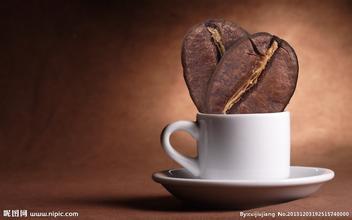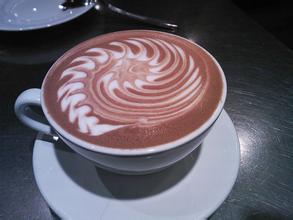The taste of coffee in Santa Cruz Manor, Ecuador is very balanced and refreshing.
The port of Guayaquil is Ecuador's largest seaport. It faces the Pacific Ocean and backs to Mount Santa Ana. The nearby island of Pune serves as a natural barrier to protect the harbour from storms. There is a dock to the south, more than 900 meters long. In the harbor, ships from different parts of the world are moored, flying various flags. The port railway leads to Quito, the capital, and a series of highways connect Quito with other cities in the country. Bananas, cocoa, coffee, cotton and other products from all over the country are collected and distributed here. Guayaquil also played an important role in the history of friendly exchanges between the peoples of China and Ecuador. As early as the 18th century, Chinese clothing, textiles and other goods were transported to Ecuadorian cities through Guayaquil. In August 1978, the Chinese freighter Jialing River arrived here for the first time. Most of the imported and exported goods of the two countries are also Ecuador's national emblem, which was used in 1900 and is similar to the national emblem of Colombia. A fierce "American Condor" vulture spreads its wings above the national emblem. It is Ecuador's national bird, symbolizing sovereignty and independence. Ecuador's national emblem has a unique design concept, fully demonstrating the national flavor: Ecuador's highest peak, Chimborazo Mountain, is covered with snow. Against the blue sky, it stands towering on the Pacific coast. The trees at the foot of the mountain are verdant. A big river winds out from the depths of the mountains and gradually flows into the blue sea. A ship Ecuador is proud of as South America's first steam ocean liner lies at sea. Above the snowy peak, a Mayan culture symbol of the "sun in May" radiant. On both sides of the sun marked with March, April, May, June month symbols "Zodiac twelve officials", representing the Ecuadorian people in 1845 to maintain national independence against foreign invasion of the difficult years. The bar at the bottom represents the state institutions of the republic, symbolizing justice and authority. Ecuador has a presidential system. On 26 November 2006, Correa, candidate of the Movement for a Sovereign Fatherland, was elected President in the second round of the presidential election and took office on 15 January 2007. After taking office, he pushed for the convening of a constituent assembly. On April 15, 2007, Ecuador decided to convene a constituent assembly with 81.72% support. In September, Ecuador held elections for delegates to the Constituent Assembly, and the ruling party, the Sovereign Fatherland Alliance, won 61% of the seats. In July 2008, the Constituent Assembly adopted the draft of a new constitution. In September, the new constitution was approved in a referendum with 63.94% support.
In the mid-15th century, among fishermen fishing in the Pacific Ocean off western South America, there were legends of magical islands. It is said that the islands can sometimes be clearly seen from a distance, but disappear as the ship approaches; sometimes they look like a galleon, sometimes they take on the shape of a witch. Fishermen called the islands "the enchanted islands," thinking they might be ruled by demons like the banshees of the sea in the Odyssey. This island, known to fishermen as the "magic island," is today the Galapagos Islands.
In 1535, the Galapagos Islands were discovered by chance by Frei Thomas de Berlanga of Spain and others. Thomas was born in 1487 on the banks of the Duro River in the Spanish province of Soria. He was the fourth bishop of Panama at that time. He was ordered to Peru. When his ship set out from Panama on February 23, under the impact of a strong current, they were carried to an unknown sea in the outer ocean. On March 10, an island in the Galapagos Islands was discovered. With only two days of fresh water left on board, the sailors landed in lifeboats and found plenty of seals, turtles, giant tortoises that could carry people, and viper-like iguanas on the island. But they could not find fresh water, so they headed for another larger island more than 20 kilometers away. As there was still no wind, it took them several days to get there, the water ran out quickly, and they had to starve, including the horses on board, and there was no grass to eat. Arabica trees were first introduced to Ecuador in 1952, and their coffee quality was very good, especially when harvested in early June. Ecuadorian coffee beans can be divided into Galapagos (Galapagos) and Gigante (Gigante) two varieties, both have large particles, heavy portions of characteristics. Ecuadorian coffee can be divided into two types according to quality: No.1 and Extra Superior. They are mainly exported to the Nordic countries of Scandinavia.
The main problem coffee producers face is trying to maintain consistent quality. The coffee here is generally very balanced and refreshing, with a distinctive aroma.
Ecuador is one of the few countries in South America that produces both Arabica coffee and Robaik coffee. But as the land available for arabica coffee trees dwindles, robert coffee production is increasing. The best Arabica coffee is grown in the Andes, especially in the Chanchamgo Valley, which divides into two mountain ranges extending from south to north into central Ecuador

Important Notice :
前街咖啡 FrontStreet Coffee has moved to new addredd:
FrontStreet Coffee Address: 315,Donghua East Road,GuangZhou
Tel:020 38364473
- Prev

Berries, caramel, special sweetness Panama Emerald Estate Coffee Flavor Taste Variety Introduction
Panama is a small country located in the heart of the American continent. The waters of the Atlantic and Pacific oceans wash over its beaches. Panama is located at 9 degrees north latitude, at the confluence of the Central Mountain Range, where Mount Baru, one of the highest volcanoes in Central America, is located. With an elevation of more than 11,400 feet, Baru Volcano surrounds a land rich in nutrients and fertile soil unique to Panama
- Next

The coffee flavor of Ecuador's Hassanda Coffee Garden is mild in taste and with light grass.
The National Congress of Ecuador adopts a unicameral system. There are a total of 124 members, including 15 members from the whole country, 103 from provinces and 6 from overseas. The current Congress was formed in April 2009 and was formally sworn in on July 31 for a four-year term. The seats held by each party in parliament are as follows: 59 seats for the ruling Party, 59 seats for the Sovereign Motherland Movement, 19 seats for the 121 Patriotic Community Party, 7 seats for the Institutional Reform Party, and 7 seats for the cities.
Related
- Does Rose Summer choose Blue, Green or Red? Detailed explanation of Rose Summer Coffee plots and Classification in Panamanian Jade Manor
- What is the difference between the origin, producing area, processing plant, cooperative and manor of coffee beans?
- How fine does the espresso powder fit? how to grind the espresso?
- Sca coffee roasting degree color card coffee roasting degree 8 roasting color values what do you mean?
- The practice of lattes: how to make lattes at home
- Introduction to Indonesian Fine Coffee beans-- Java Coffee producing area of Indonesian Arabica Coffee
- How much will the flavor of light and medium roasted rose summer be expressed? What baking level is rose summer suitable for?
- Introduction to the characteristics of washing, sun-drying or wet-planing coffee commonly used in Mantenin, Indonesia
- Price characteristics of Arabica Coffee Bean Starbucks introduction to Manning Coffee Bean Taste producing area Variety Manor
- What is the authentic Yega flavor? What are the flavor characteristics of the really excellent Yejasuffi coffee beans?

